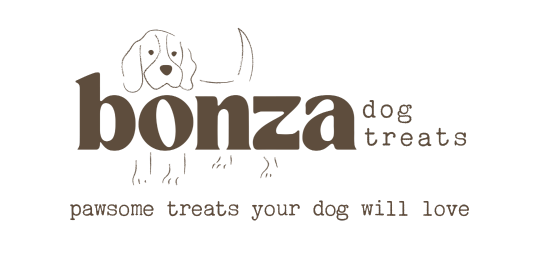Your Kitchen's Hidden Dangers
Most dog owners love treating their furry friends to a little 'human food' from time to time. You know to avoid chocolate and grapes, but are you aware of the surprising toxicity hiding in everyday Australian pantry staples? Even a small amount of a seemingly harmless food can cause serious issues, from digestive distress to life-threatening emergencies.
This guide goes beyond the basics. We'll uncover five common, sneaky toxins often found in your kitchen that pose a real threat to your dog. More importantly, we'll provide an immediate, safe, and delicious swap for each one, ensuring you can treat your best friend without worry. Read on to keep your dog happy, healthy, and safe from hidden household risks.
Toxin 1: Onions
These are staples in every Australian kitchen, but all members of the Allium family (including chives, leeks, and spring onions) contain compounds that are highly toxic to dogs. These compounds cause damage to your dog's red blood cells, leading to haemolytic anaemia—a potentially severe condition where the body cannot carry enough oxygen.
The danger isn't just in raw form; cooked, dried, and powdered forms (like onion powder used in many store-bought sauces and stocks) are actually more concentrated and therefore more dangerous. Symptoms may not appear immediately; they can take several days to surface and may include lethargy, weakness, pale gums, and dark red/brown urine.
Toxin 2: Macadamia Nuts
As a popular Australian nut, Macadamias often sit in bowls on coffee tables, making them an accessible target for curious dogs. Unlike some toxins where the mechanism is fully understood, the exact reason Macadamia nuts are poisonous to dogs remains a mystery.
What we do know is that ingestion can lead to symptoms that, while rarely fatal, are extremely distressing for your pet. Within 12 hours of eating macadamia nuts (even a small handful), dogs can develop severe weakness in their hind legs, resulting in a temporary inability to stand or walk properly. Other symptoms include vomiting, tremors, and a high fever. If your dog gets into a bowl of nuts, you must contact your vet immediately.
Healthy Swap: Peanut Butter (Xylitol-Free is Non-Negotiable!)
If you want a highly motivating, nutrient-dense treat, Peanut Butter is a great swap, perfect for stuffing puzzle toys or administering medication.
However, this comes with a life-saving warning: Peanut butter must be 100% Xylitol-free. Xylitol, often listed as Additive 967 or Birch Sugar, is an artificial sweetener that is lethally toxic to dogs. Xylitol is often found in specialty, low-sugar, or high-protein brands (such as Nuts 'N More or P28). Always check the ingredients list: if it doesn't list only peanuts (and maybe salt), do not feed it to your dog. When in doubt, stick to brands that confirm they contain No Xylitol.
Toxin 3: Grapes/Raisins (The Hidden Danger)
By now, most owners know fresh grapes and raisins are toxic. What many don't realize is that these items are the source of an unusual and potentially catastrophic danger: they can cause rapid and sudden kidney failure in dogs. The toxic mechanism isn't fully understood, but even a small amount can be fatal to some dogs, meaning there is no safe dosage.
The hidden danger lies in items like:
-
Boxed Cereals: Breakfast mueslis, granolas, or oatmeal mixes often contain raisins.
-
Health Bars: Energy bars, protein bars, or trail mixes containing dried fruit.
-
Baked Goods: Fruit scones, slices, or breads (like hot cross buns) containing dried currants or raisins.
Since the risk is so high, never leave these items accessible to your dog, and scrutinize every ingredient list on baked goods or snacks you might share.
Healthy Swap: Blueberries
Swap those toxic dried fruits for the power of Blueberries! These small, antioxidant-rich berries are a safe, low-calorie, and delicious treat. They are easy to freeze, making them a fantastic, refreshing snack on a hot Australian day. Blueberries also provide a gentle source of fibre and vitamins, adding a nutritional boost without the kidney risk.
Toxin 4: Stone Fruit Pits
Stone fruits are a delicious part of the Australian summer, but the pits or stones inside fruits like apricots, peaches, plums, and cherries pose a dual and potentially fatal threat to your dog.
-
Choking & Obstruction Hazard: The pits are perfectly sized to cause a complete blockage in the throat (choking) or, more commonly, to become lodged in the stomach or intestinal tract. An intestinal blockage is a medical emergency that requires expensive and invasive surgery to correct.
-
Cyanide Toxicity: The seeds or kernels inside the hard pit contain trace amounts of cyanide. While a single pit swallowed whole is unlikely to poison a large dog, if your dog chews and breaks open multiple pits, the cyanide can be released and absorbed, leading to serious systemic toxicity.
The safest policy is to never let your dog access whole stone fruits and always discard the pits immediately after you've finished eating.
Healthy Swap: Apple Slices (Core-Free!)
A fantastic, crunchy alternative to stone fruits is Apple Slices. Apples are rich in fibre and vitamin C and provide a satisfying crunch that dogs love.
Safety Note: Apple seeds also contain tiny amounts of cyanide (similar to stone fruit pits), but the amount is unlikely to pose any problem to a healthy dog. Slicing the apple into small pieces ensures that your dog doesn't try to swallow a large piece whole, eliminating both the choking risk.
Toxin 5: Xylitol (The Silent Killer)
Xylitol is a highly effective sugar substitute (also known as E967 or Birch Sugar) used in many "sugar-free," "keto," or diabetic-friendly human foods. While harmless to humans, it is lethally toxic to dogs because it causes their bodies to release insulin at a catastrophic rate. This leads to a sudden and rapid drop in blood sugar (hypoglycemia), which can occur within minutes.
Common Sources You Must Check:
-
Sugar-Free Gum & Mints: This is the most common cause of poisoning. A few sticks of gum can be enough to kill a small dog.
-
Peanut Butter & Nut Spreads: As noted earlier, specialty, high-protein, or diet brands frequently use xylitol.
-
Human Toothpaste: Never use human toothpaste on your dog; always use vet-approved enzymatic pet paste.
-
Baking Ingredients: Bulk xylitol used for home baking is a deadly poison if consumed directly.
Symptoms are rapid: Look for vomiting, weakness, staggering, collapse, and seizures. If your dog consumes any amount of xylitol, call your vet immediately. Do not wait for symptoms.
Healthy Swap: Plain Yoghurt or Cottage Cheese
If you are looking for a dairy-based treat or an easy medium to hide medication, swap out processed sugar-free items for a small amount of Plain Yoghurt or Cottage Cheese. These are excellent sources of calcium and protein.
Safety Tip: Ensure the yoghurt or cheese is plain, unsweetened, and low-fat. Avoid any dairy products with added fruits or flavourings, as these can contain hidden sugars or sweeteners.
When to Panic: Emergency Protocol
If you discover your dog has ingested a potentially toxic food—whether it’s a single macadamia nut or a sugar-free slice containing Xylitol—your speed of action is the difference between a minor scare and a fatal emergency. Do not wait for symptoms to appear.
-
Stop Ingestion Immediately: Secure the source of the toxin away from your dog and any other pets.
-
Call Your Veterinarian or Emergency Vet: Have their number readily available. Do not hesitate, regardless of the time of day.
-
Provide Crucial Information: Be ready to tell the vet:
-
What was consumed (e.g., Macadamia nuts, Xylitol gum).
-
How much was consumed (estimate the quantity: e.g., one raisin, half a teaspoon of powder, three pieces of gum).
-
When it was consumed (your best guess of the time).
-
Your dog's weight (essential for dosage calculations).
-
-
Do Not Induce Vomiting Without Instruction: Some toxins (like essential oils) are more dangerous coming back up. Only induce vomiting if explicitly told to do so by a veterinary professional. Follow their directions immediately and precisely.
Conclusion: Feed Safe, Love Fully
Treating your dog is one of the joys of ownership, but this guide shows that sometimes, even the most seemingly innocent kitchen items pose a hidden threat.
The golden rule for keeping your dog safe is always to feed dog-specific food and treats and to check every label on human food before sharing. By understanding the surprising dangers of things like Xylitol and stone fruit pits, and by prioritizing safe, nutritious alternatives like sweet potato and blueberries, you can protect your best friend from preventable emergencies. When in doubt, always ask your vet!




